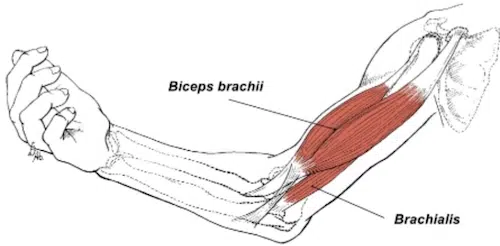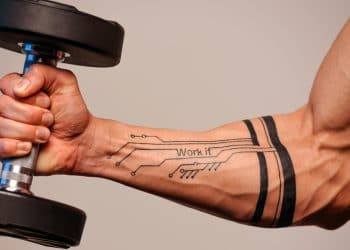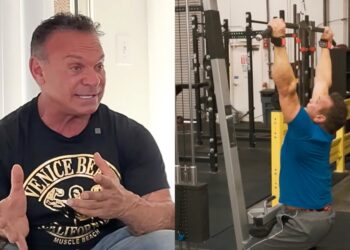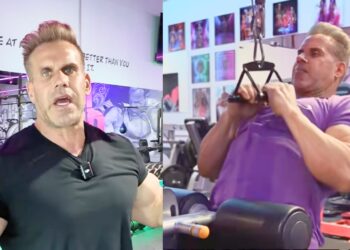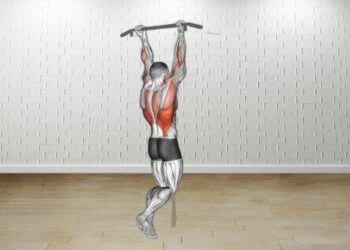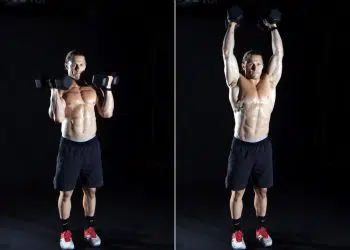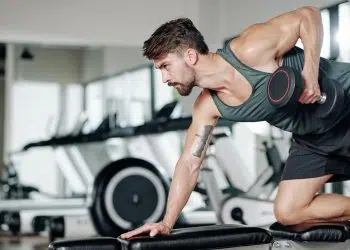Almost everyone who works out wants bigger arms, although some will deny it! Big arms are important in bodybuilding, but most powerlifters, weightlifters, and strongmen are secretly proud of their massive arms.
As far as arm muscles go, most people know that they need to train their biceps and triceps. After all, they are the most prominent upper arm muscles. That means a steady diet of barbell, dumbbell, and cable curls, and triceps pushdowns, dips, and narrow grip bench presses.
However, there is another muscle that deserves your attention if you want to build the biggest, strongest, most muscular arms possible – the brachialis. This lesser-known muscle can add a lot to the size of your upper arms and also increase your arm strength.
In this article, we explain what the brachialis is and does and the best ten exercises to develop it. We’ve also got a great brachialis workout for you to try.
Learn About Brachialis Anatomy
Level Up Your Fitness: Join our 💪 strong community in Fitness Volt Newsletter. Get daily inspiration, expert-backed workouts, nutrition tips, the latest in strength sports, and the support you need to reach your goals. Subscribe for free!
Like the better-known biceps, the brachialis is an elbow flexor which means it’s responsible for bending your upper arm. However, unlike the biceps, the brachialis plays no role in shoulder flexion or forearm supination. It just bends your arm – and that’s it!
The brachial muscle is located beneath your biceps and therefore less prominent. It’s about 50% stronger than the biceps, which means it’s a crucial functional muscle (1). Stronger brachialis will allow you to lift heavier weights when you train your biceps and back, leading to more productive workouts.
However, training your brachialis will also increase upper arm size by pushing your biceps up, making them appear larger.
So, whether you want to stretch your T-shirt sleeves with bigger arms, or get better at pull-ups, training your brachialis will help!
Top 10 Exercises for Increase Brachialis Muscle Size
Build your brachialis with these ten tried and tested exercises!
1. Any neutral grip back exercise

The brachialis muscle is most active when your forearm is in the neutral position, i.e., palms facing inward. That means your brachialis gets a great workout whenever you do any of the following back exercises:
- Narrow, neutral grip lat pulldown
- Parallel grip lat pulldown
- Narrow, neutral grip seated row
- Narrow, neutral grip chin-up
- Neutral grip T-bar row
- Single-rm dumbbells rows and Kroc rows
- Neutral grip lever row machine
Use these exercises to build your back AND brachialis at the same time!
2. Dumbbell Hammer Curl
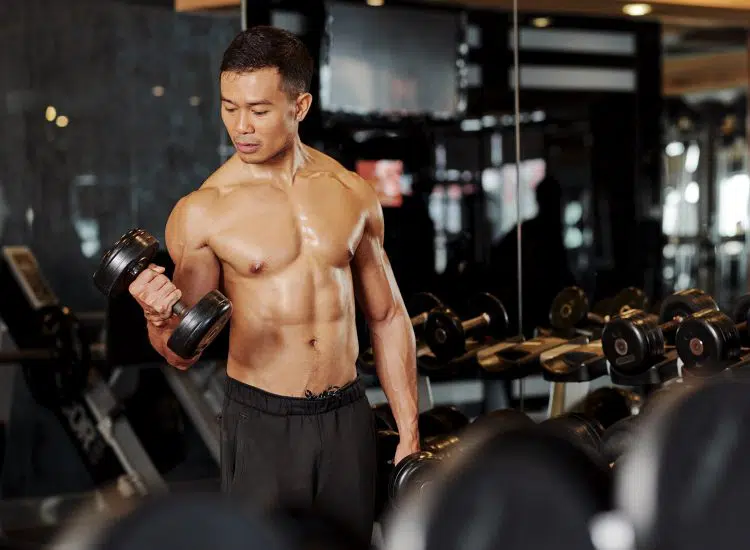
Hammer curls are so-called because, when you do them, you look like you are hammering a nail into some wood. Done with that all-important neutral grip, this is a very effective brachialis and biceps exercise. You can do it seated or standing as preferred.
Read more about dumbbell hammer curl here.
3. Cable Hammer Curl
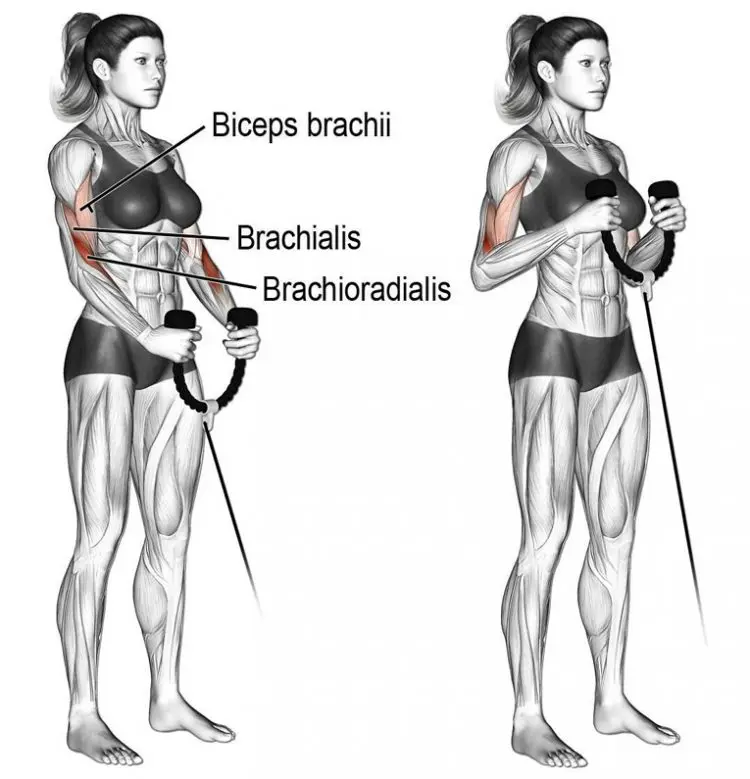
Using a cable machine instead of dumbbells helps keep your muscles under constant tension. Also, cable machines are ideal for doing intensity-boosting drop sets. Just attach a rope handle to a low pulley machine and get to work!
Learn how to do cable hammer curls here.
4. Cross-Body Hammer Curl
Cross-body hammer curls decrease biceps activation, which means your brachialis has to do more of the work. While it’s impossible to completely isolate your brachialis, this exercise comes pretty close. Use light to moderate weights and medium to high reps, and go for the pump!
Found out more about cross-body hammer curls here.
5. Dumbbell Hammer Preacher Curl

Larry Scott was a golden-era bodybuilder famed for his massive arms. He was a big fan of preacher curls, which is why this exercise is sometimes called Scott curls. Dumbbell hammer preacher curls were one of Larry Scott’s favorite arm exercises. They keep your upper arms stationary, which makes them virtually cheat-proof.
Read more about dumbbell hammer preacher curls here.
6. Kettlebell Hammer Curl
This unusual exercise uses leverage to overload your brachialis. As you bend your elbow and lift the kettlebell, the weight will extend forward and beyond your hand, increasing the resistance as you near the top of each rep. You’ll need to grip the kettlebell handle hard to keep it stable, which will increase forearm and brachialis activation. Train one arm at a time or grab two kettlebells and work both arms together.
How to do it:
Level Up Your Fitness: Join our 💪 strong community in Fitness Volt Newsletter. Get daily inspiration, expert-backed workouts, nutrition tips, the latest in strength sports, and the support you need to reach your goals. Subscribe for free!
- Hold your kettlebell(s) down by your side, palms turned inward.
- Without rotating your wrists, bend your arms and curl the weights up to about chest height.
- Lower the kettlebells back to your legs and repeat.
7. Zottman Curl
The Zottman curl is an old-school hybrid exercise that combines reverse curls and regular curls to train your biceps and brachialis at the same time. You can do this exercise seated or standing and using an alternating or simultaneous arm action as preferred.
How to do it:
- Hold a dumbbell in each hand by your sides, palms facing your legs. Make sure your torso is fully upright. Brace your abs.
- While keeping your upper arms close to your sides, bend your elbows and curl the weights up to your shoulders. As you raise the weights, rotate your wrists so that your palms are turned upward. Curl the weights all the way up until your biceps are fully contracted.
- Next, without lowering the weights, rotate your forearms so your palms are now facing downward. This is called a pronated grip.
- Extend your arms and, keeping your hands pronated, lower the weights down towards the starting position.
- As the dumbbells near your legs rotate your wrists, so your palms face inward – a neutral grip.
- Repeat for the prescribed number of repetitions.
8. Barbell Reverse Curl
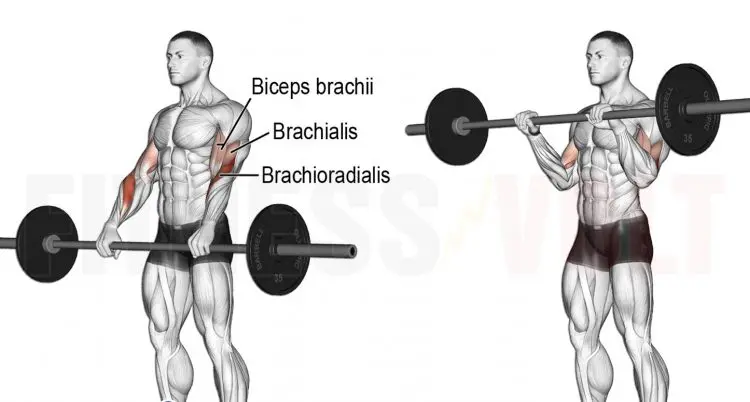
Using a pronated or palms down grip increases brachialis activation. As an added benefit, this exercise also targets your forearm extensors. Training your brachialis and forearm extensors together will add a lot to your upper and lower arm size and strength.
Learn how to do barbell reverse curls here.
9. Reverse Cable Curl
While reverse barbell curls are a great exercise, it’s always useful to know some alternatives to avoid getting bored of doing the same movement over and over. As mentioned above, using a cable machine instead of free weights will also help keep your muscles under constant tension, which may help increase your pump.
How to do it:
- Attach a bar to a low pulley machine. Hold the handle with a pronated (palms down) grip. Stand with your feet about shoulder-width apart, shoulders down and back, and core braced.
- With your upper arms close to your sides, bend your elbows and curl the handle up to your shoulders.
- Extend your arms and repeat.
10. Dumbbell Reverse Curl
No barbell or cable machine? No problem! You can do reverse curls using one or two dumbbells too. As an added benefit, doing dumbbell reverse curls mean that you’ll soon notice if you have one arm stronger than the other.
How to do it:
- Seated or standing, hold a dumbbell in each hand down by your side. Your palms should be facing backward and your thumbs pointing toward your legs.
- With your upper arms tucked in, bend your elbows and raise the weights up to your shoulders. Do NOT turn your wrists.
- Lower the weights and repeat.
Brachialis Workout
Do this workout 1-2 times a week in place of your usual biceps workout. Don’t worry; your biceps won’t shrink just because you are focusing on your brachialis, as your biceps are also involved in all these exercises. And, so Fyou don’t experience biceps curl withdrawal, there is a regular curling exercise at the end of the program.
Remember to spend a few minutes warming up before this or any other workout. This will increase your performance and reduce the risk of injury. A few minutes of cardio should suffice, followed by some dynamic joint mobility and flexibility exercises.
However, if you are doing this workout after training another body part, you can probably skip the warm-up altogether.
| Exercise | Sets | Reps | Recovery | |
| 1 | Dumbbell hammer preacher curl | 3 | 8 | 2 minutes |
| 2 | Zottman curl | 2 | 10 | 90 seconds |
| 3 | Reverse cable curl | 2 | 12 | 60 seconds |
| 4 | Kettlebell hammer curl | 2 | 15 | 45 seconds |
| 5 | Barbell biceps curl | 3 | 8 | 2 minutes |
How to Increase Your Bicep Peak?
Undoubtedly, genetics play a pivotal role in determining the shape of your biceps, so you might either praise or critique your lineage for that. The long head of the biceps, in particular, tends to exhibit a more pronounced peak compared to the short head. Hence, if you’re keen on enhancing the peak of your biceps, consider integrating exercises specifically targeting the long head into your routine.
Training Strategy For Bicep Growth
Tempo in bicep training is of the essence. Slower curls target the brachialis, while faster ones highlight the biceps. To capitalize on both muscle groups, intersperse your regimen with varied curling speeds. Make sure the eccentric part of the curl is maintained between one and two seconds for ideal biceps engagement.
Diversifying your workouts is key to promoting strength and muscle mass. Aim for 9-12 sets for biceps or brachialis in one session, spreading these across 3-4 unique sessions every week. If you choose to incorporate techniques like forced reps or negative intensities, perhaps consider condensing your regimen to four total days a week. This helps avert overtraining and guarantees adequate recovery.
For those starting, an effective approach involves working the biceps on three separate days of the week such as Monday, Wednesday, and Friday. Take a hiatus after six weeks. Begin with just two exercises, capping at 2-3 sets each time. Always push yourself, but refrain from reaching complete exhaustion. Remember, excessive weights may lead to strains, so consulting an expert beforehand is always a wise decision.
Rep Variations and Focus Points
Variety in rep ranges and rest intervals is foundational in bodybuilding.
For perspective:
- 5 sets × 5 reps with a 120-second rest accentuates mechanical stress, fostering protein synthesis.
- 3 sets × 8-12 reps with a 75-second rest is a well-balanced approach.
- 4 sets × 12-15 reps with a 30-second interval zeroes in on metabolic exhaustion and blood volume response.
Such diversity ensures all-encompassing muscle growth. Moreover, the speed of your reps, especially the negative component, is pivotal for maximizing brachialis activation. Controlled, slower eccentric phases enhance brachialis engagement, which contrasts with the faster movements of the biceps. This distinction arises since the brachialis has more slow-twitch fibers. While usually a single exercise suffices for the brachialis, those striving for a pronounced arm muscle tone might contemplate integrating two neutral-grip elbow flexion exercises in alternate sessions.
Key Takeaways
If enhancing the bicep’s peak and overall arm girth is your goal, the brachialis cannot be sidelined. As it grows, the biceps appear elevated, lending to a more pronounced look. Implementing a neutral or hammer grip during exercises can optimize brachialis activation. It’s crucial to note the nuances between grip types: tighter grips spotlight the bicep’s long head, while broader grips draw attention to the inner, short head. For peak contraction, aim to curl the bar up to your nose. Stay committed to a well-structured six-week program to witness significant muscle development.
Wrapping Up
It’s often surprising how important small, invisible muscles can be. You can’t see your transverse abdominis, your rotator cuff, or your brachialis, but, in their own way, each one plays a crucial role in your appearance and performance.
In a lot of cases, these superficial muscles are involved indirectly in the exercises you already do. But, occasionally, it’s worth shining the spotlight on them and giving them a little more attention.
Use the exercises and workout in this article to pump up your brachialis and increase upper arm size and strength.
References:
1 – PubMed: Anatomy, Shoulder and Upper Limb, Brachialis Muscle (source)

